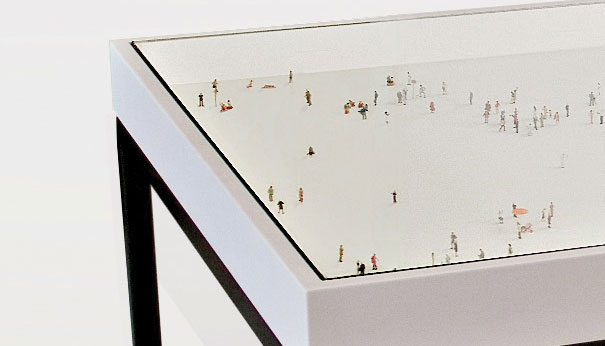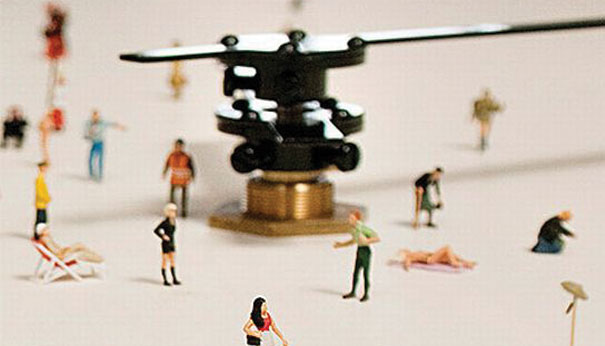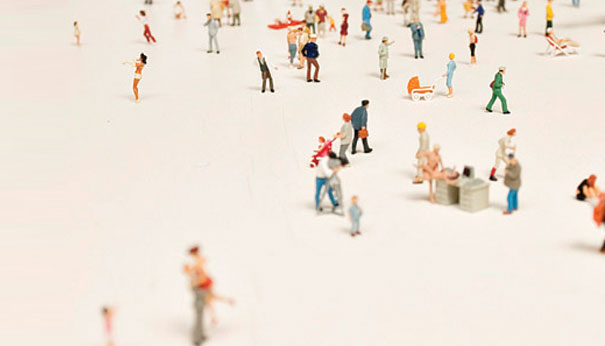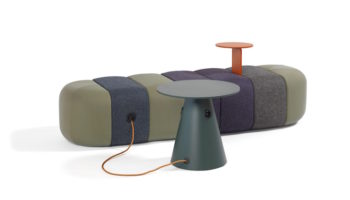Rolf Sachs Wants You to Feel Alone in a Crowd
American author Steven Millhauser has a surpassingly beautiful and bizarre story called “The New Automaton Theater” in which artful displays of miniaturized facsimiles of humans are conceived with such precision that they begin to seem more alive than their “real” spectators. Designer Rolf Sachs has captured something of this strange inversion with his “Alone in a Crowd” table, a piece Sachs recently showed at Art Basel.
“Alone in a Crowd” Table. Designed by Rolf Sachs.
From a distance, “Alone” might remind you of those king-sized air hockey tables from the 70s, but closer inspection reveals a frozen tableaux of humanity memorialized under an oversized glass panel. Even closer inspection opens up a world of possible encounters between the 511 architecturally-precise Preiser figures; although, true to the piece’s name and with a select few exceptions, most of the miniatures remain in a world of their own.
As we recently saw with Sachs’ lighting trio–Rubecula, Hand Me a Light, and Lighthouse–the designer seems entranced with the notion of containment. But while each of the lights features a seemingly displaced figure trapped under a transparent cage of glass, Alone in a Crowed dramatizes and imprisons an entire world beneath a flat, transparent pane. One can’t help but speculate that Sachs has a certain affinity with philosopher Michel Foucault, who believed that reality is but a succession of apparatuses that allow us to watch one another, thus each of us is observer and observee, a condition that heightens what Foucault sees as an innate tendency for paranoia.
Sachs’ vision is a might more melancholic, yet, thankfully, a bit heavier on humor. While it’s true that “barely any of the figures interact, with the exception of society’s crucial units, such as families, couples and lovers,” it’s also apparent that Sachs’ miniatures lack malevolence; the bulk of them are just going on about their day–not necessarily oblivious to the goings-on around them (which include a handful of copulating couples, brass bed placed in plein air and plain view), but just engaged in their own affairs. Most tend to see this as a rather dreary vision: “The dramatic juxtaposition of scale puts our own existence in perspective and leads us to realize that ultimately in life we stand alone.” I, however, tend to think that, ultimately, “Alone” has a cohesive effect. For each time users gather round this huge table they’re bound to make new discoveries and formulate new observations of the facsimile of life below, insights they’re bound to reveal to those who share a place at the table.
Via MocoLoco.







Leave a Reply